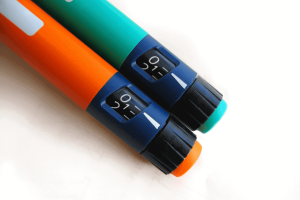What to think about when buying an insulin pump
Thanks to new improvements in technology, insulin pumps are becoming a more common way for diabetes patients to manage their blood sugar. If you are considering an insulin pump, here are a few important things to think about before you start shopping around.
What is an insulin pump?
An insulin pump is a battery-operated device that works similarly to your pancreas. It will provide your body with a constant supply of insulin, even when you aren’t eating. The device itself is worn outside the body and is usually no bigger than the size of a small cell phone.
How does an insulin pump work?
The steady supply of insulin the pump consistently delivers is called the basal dose. When your blood glucose rises after you eat, the pump will need to deliver a larger burst of insulin, or a bolus dose. These doses of insulin are delivered through a plastic tube called a catheter. A very thin needle will insert the catheter through the wearer’s skin and is then taped into place.
What to consider when buying an insulin pump.
- Doctor recommendations. Before you start shopping for an insulin pump, talk to your health care provider about whether this type of diabetes treatment would be good for you. Your doctor may be able to provide recommendations about brands and models that would work best for your lifestyle.
- Cost. According to the 2013 Consumer Guide to insulin pumps, a new device can cost as much as $800. Most pumps need to be replaced every few years, making them an expensive treatment option. Before you begin shopping, check with your insurance provider to see which brands may be covered by your health care plan.
- Size. While most insulin pumps are no bigger than a small pager, some models offer larger screens and buttons. If you have difficulty seeing, this option may work better for you.
- Color. An insulin pump is worn round the clock, making it your most popular accessory. Fortunately, these devices come in a wide variety of both flashy and subtler colors. Before you purchase a pump, think about how it will match your wardrobe and how you will feel about wearing it everyday.
- Additional features. Are you good at figuring out new gadgets? If, so a more tech-savvy device may work for you. Some insulin pumps work with devices known as continuous glucose monitors, or CGM systems. Similar to insulin pumps, these little devices are worn outside the body. They provide real-time measurements of glucose levels, providing the wearer with an update every 1-5 minutes. Users can set an alarm to go off when glucose measurements are too high or too low. The insulin pump can then be used to make the right adjustments.




